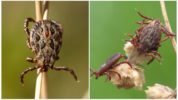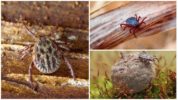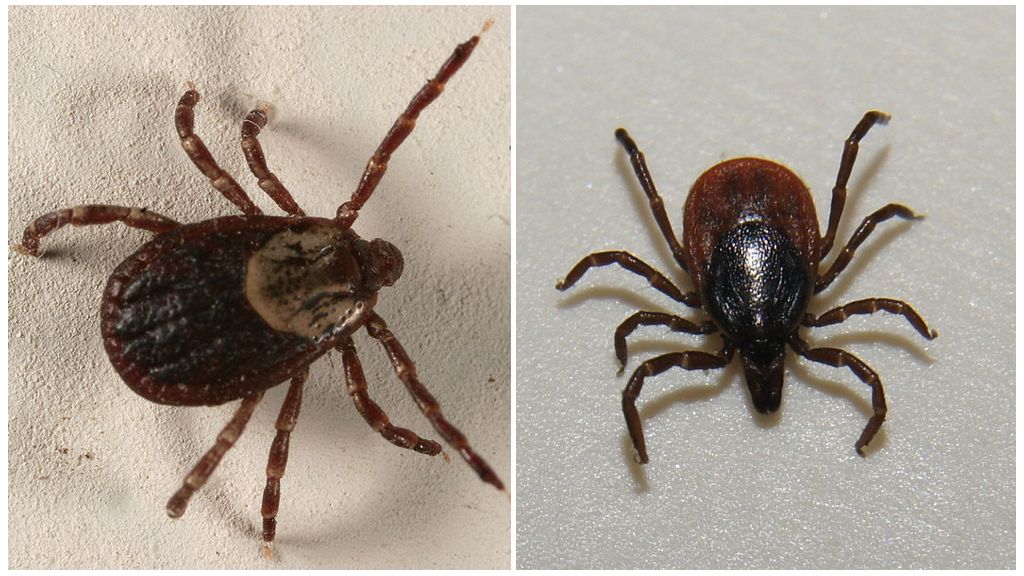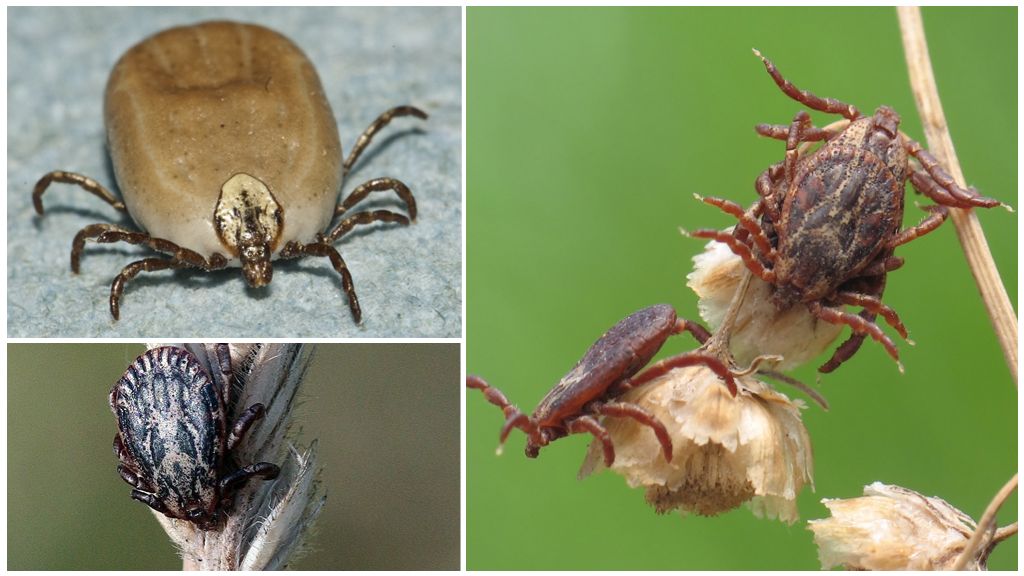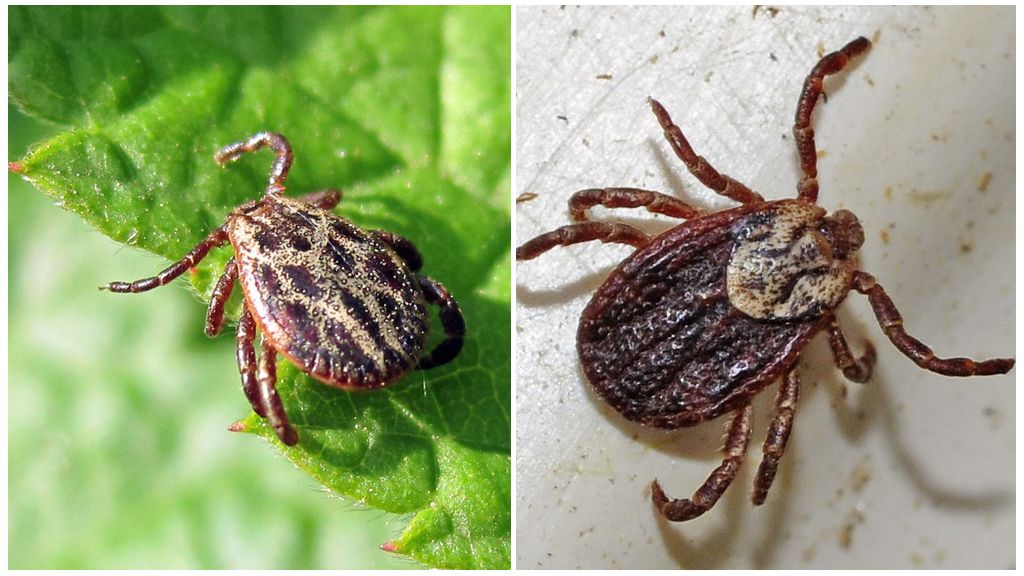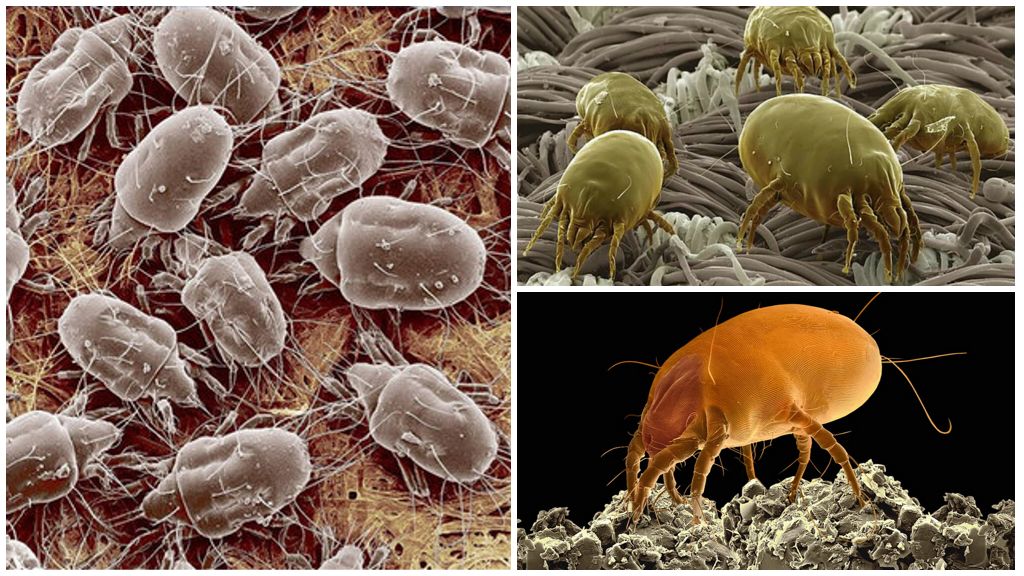- Pasture tick
- Pasture tick
- Tick Disease
The pasture tick has an official Latin name - Ixodidae. The same group includes ticks of the species Dermacentor marginatusliving on pastures, parasitizing on animals. They feed on blood, spread dangerous diseases. To reduce the number of parasites, pest control is carried out, pastures are cleared of last year's foliage, hay.
Ixodid ticks Ixodidae
The most common pasture tick is taiga, canine, forest, dermacenter. Outwardly, they have some differences, the lifestyle is not different. The size hungry individual 3 mm. During nutrition, the abdomen increases in size, reaches several centimeters in diameter. The coloring of a hungry, well-fed pasture tick is different. Body color is gray, brown, red, burgundy, black. Males are always smaller than females. A photo of a pasture tick is presented below.
Habitat, lifestyle
Meet ixodid ticks everywhere, pasture live mainly in meadows where livestock are grazed. Parasite life cycle stretched for several years.
- The female lays eggs in the soil with rotten foliage, grass. From there larvae of the first age appear.
- Parasites are waiting for a warm-blooded animal to drink blood. Often a small rodent becomes the first victim. After saturation, the larva falls to the ground, continues development. Sheds, turns into a nymph.
- Hungry immature ticks are able to wait months for a prey in the grass, on the lower branches of shrubs. Pasture parasites are fed on animals that are grazed in meadows or animals. Bites once, falls to the ground again. If the life cycle of development falls in the fall, in this state the pasture tick hibernates, in the spring it continues to develop.
- Adults live for about 2 months, feed on the blood of animals and people. During this time, the female lays up to 1700 eggs, but half survive.
Favorable conditions for development are high humidity, high air temperature in the range of 22-25 degrees Celsius. Activity decreases with the onset of cold weather in hot summers.
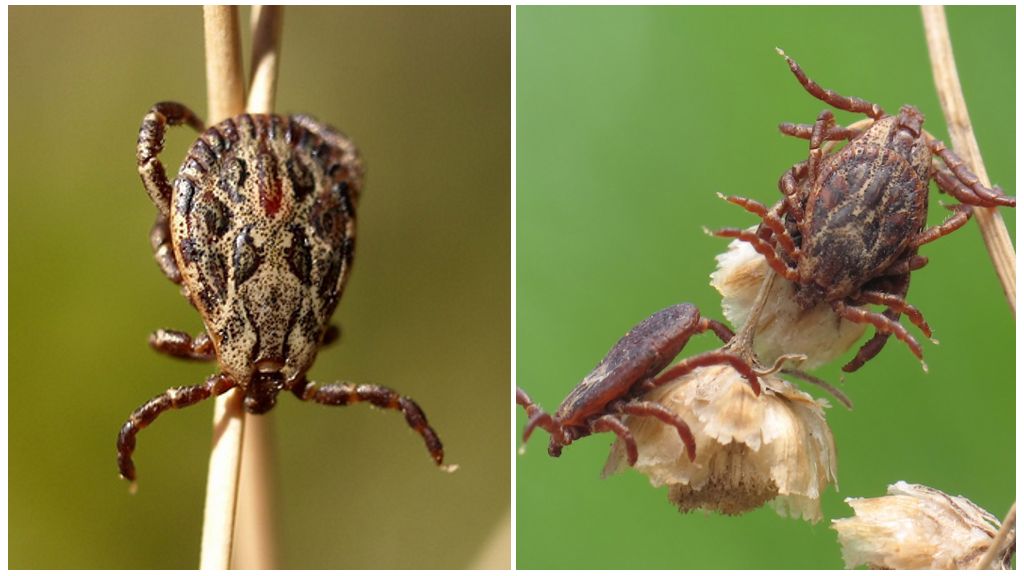
On a note!
During the season, pasture ticks are activated twice - May-June, August-September. None of them in July, early August, disappear in October after a persistent decrease in temperature indicators. Rainy summer ticks on pastures are active all season.
Medical value
Pasture tick is dangerous for the spread of various diseases.
- Lyme disease or borreliosis;
- tick-borne encephalitis;
- tularemia;
- ehrlichiosis;
- babesiosis;
- fever;
- relapsing fever;
- helminthic invasion.
Important!
The most dangerous are infections of borreliosis, tick-borne encephalitis. Infection occurs during a bite by an infected pasture tick. Incubation period lasts an average of 14 days. The first symptoms are like flu. It begins acutely with fever, headache, muscle aches, photophobia, etc.
The acute phase of borreliosis, tick-borne encephalitis lasts about 10 days. After that, either the disease recedes, immunity is developed, or continues to progress. The next exacerbation occurs within a month, the manifestations are stronger, longer.In the absence of qualified therapy, paralysis, paresis, disability, dementia, impaired vision, hearing, death occur. Tick-borne infections affect the brain, central nervous system, and muscles.
Prevention
There is no specific prevention against borreliosis, for tick-borne encephalitis for people there vaccine. A direct route of infection with dangerous diseases is the bite of an infected pasture mite, but cases of infection with the use of raw milk are also known. To prevent the disease, you must comply with the rules of your own safety when you are in the pasture, next to animals, repellents in livestock, process milk before eating.
Dermacentor marginatus
A kind of ixodid tick. It feeds on cattle, wild animals, rodents, birds, bites people. A full development cycle takes place in a year. Extremely prolific, adapts to adverse weather conditions.
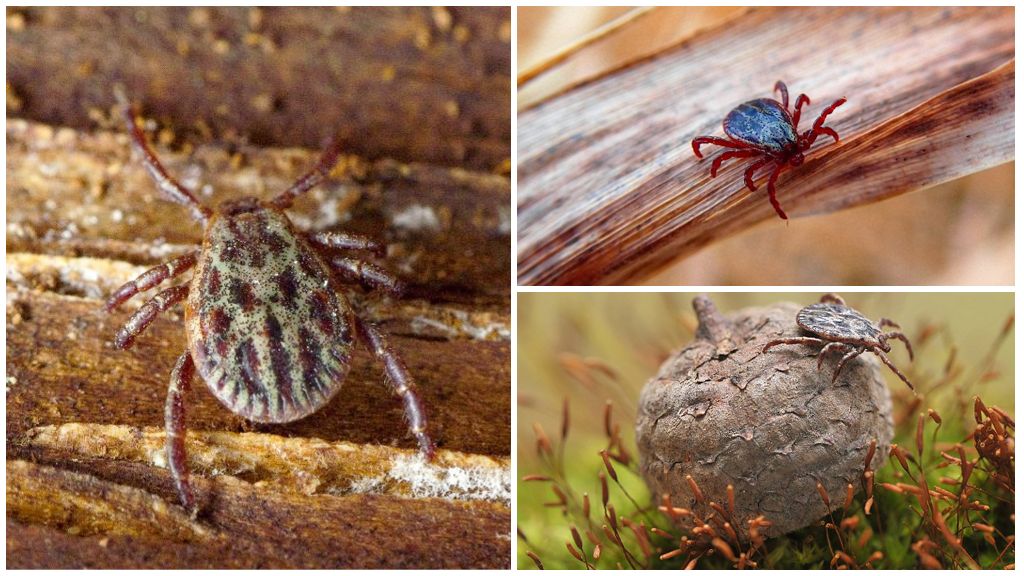
Description of appearance
The body size of a hungry pasture tick is 5 mm, and a well-fed one is 15 mm. Males are always smaller than females. Body color is uneven. Dominated by gray, brown, red, black, brown. The color of the hungry tick is lighter. Larvae, nymphs differ from adults in size, the number of pairs of legs is 6 instead of 8. A photo of the pasture tick Dermacentor marginatus is presented below.
Lifestyle
The spring activity of adults is observed already in March, as soon as the air temperature rises to +15 degrees Celsius. Particular parasites show activity in May, September. In regions where in winter the temperature does not drop below -10 degrees Celsius, pasture mites parasitize all year round. Single specimens are found in the hot months of summer.
Fertilization of the female occurs on the body of the host. Having drunk blood, it falls to the ground, gets under last year’s foliage, grass, cracks in the ground, lays eggs. One female reproduces up to 1,500 eggs.
Embryonic development in an egg lasts 2-10 weeks, depending on temperature and humidity. Larvae are chosen as victims of rodents, small animals. Eat from June to August. The development cycle lasts 3-5 days. Nymphs remain parasitic on small rodents, develop for 8 days, fall to the ground, turn into adults.
Interesting!
A hungry pasture tick lives 2 years, a fertilized, well-fed female dies after 1-2 months.
Danger
Pasture ticks of Dermacentor marginatus attack cattle, humans. Bites cause an allergic reaction on the body, itching, discomfort. Pests are also carriers of dangerous diseases:
- tick-borne typhus;
- brucellosis;
- Omsk hemorrhagic fever;
- plague;
- tick-borne encephalitis;
- tularemia;
- listeriosis;
- fever Ku.
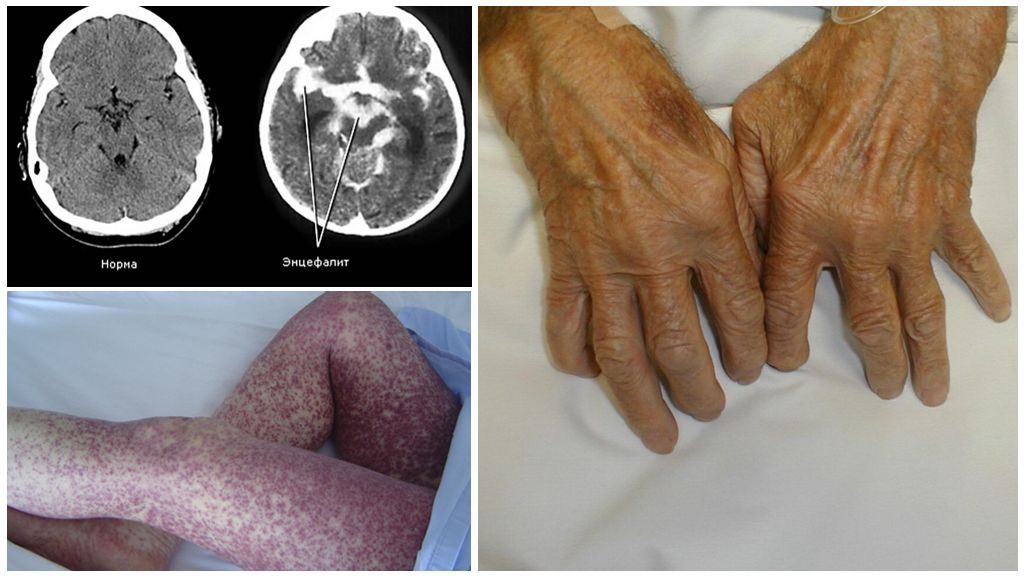
Most often, tick-borne encephalitis infection occurs. How high is the probability of infection, Rospotrebnadzor announces each year on the official website. Information is provided for each region.
Measures to control pasture ticks, bite prevention
To avoid negative consequences, tick bites necessary:
- carry out clearing of the territory, clean the thickets;
- mow grass;
- burn last year's foliage, hay, branches, sticks;
- realize pest control;
- use repellents;
- treat special animals, livestock;
- vaccinate animals, vaccinate themselves;
- use protective clothing;
- to inspect the body every 2 hours while in the pasture, to do a thorough control examination upon returning home.
In epidemiologically dangerous regions of a sucking tick, send for analysis to the lab. Check the blood for the presence of the virus, pathogenic bacteria can be after 14 days. If an infection is detected in the tick examined, emergency prevention is carried out. From tick-borne encephalitis, a person is administered immunoglobulin, from borreliosis - antibiotic. To get protection from tick-borne encephalitis for 3 years, you need to undergo a full course of vaccination. Immunity begins to be developed a week after the injection.
